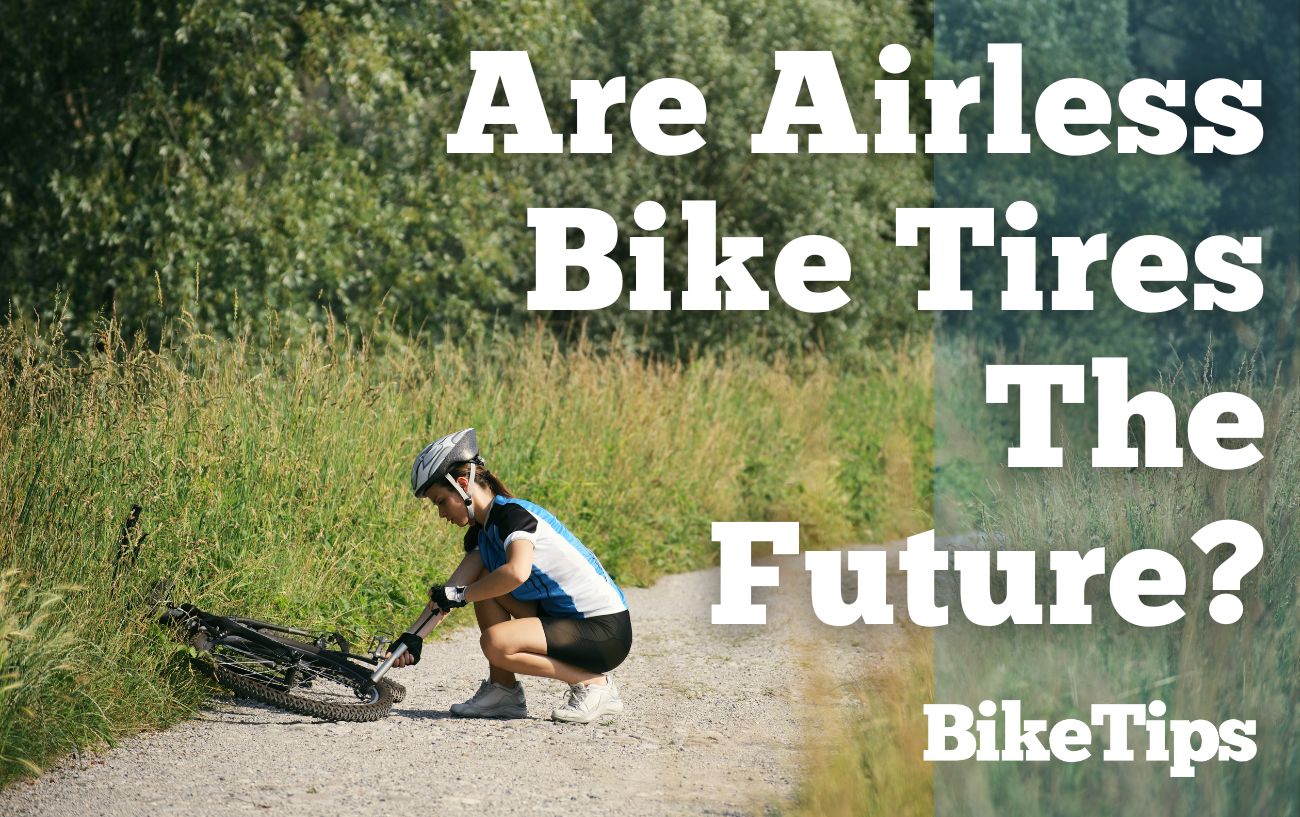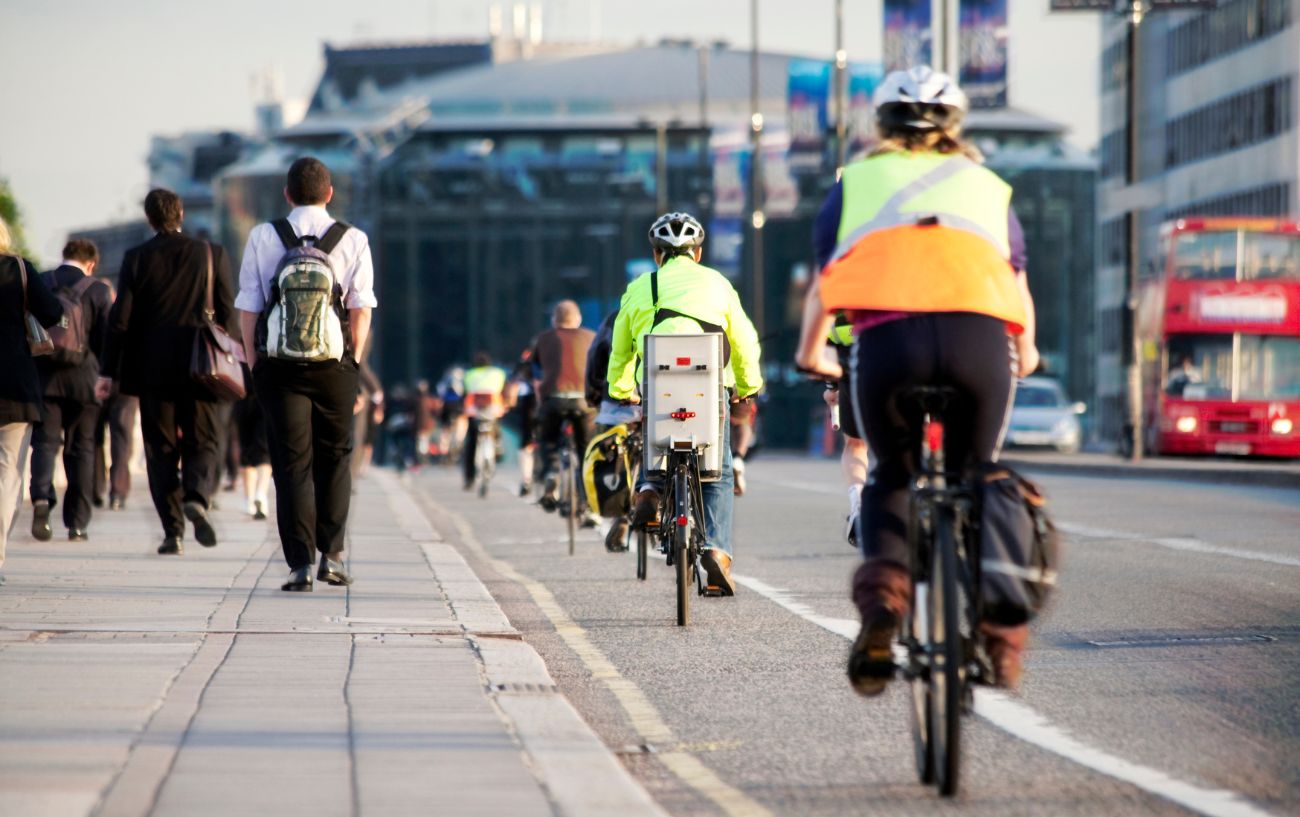It is dark, wet, and cold as you try to pry a deflated tire off your rim. You no longer have any feelings in your fingers except that you know they are painful.
You just want to get home after a tough day in the office but instead, you are stuck at the side of the road fixing your second puncture of the evening.
Every cyclist has experienced something like this. And every cyclist, once they get back on the bike, starts to ponder if there is better technology than fragile inflatable tires.
Well, there is such a thing as bikes with solid tires – and they’re starting to make an impact in the industry.
If you recognize this experience, then hopefully this article can shed some light on the pros and cons of airless bike tires – and find out whether they are the future of tire technology.
We’ll be covering:
- What Are Airless Bike Tires?
- What Are Airless Bike Tires Made From?
- What Are the Advantages of Bikes With Solid Tires?
- Are There Any Disadvantages to Airless Bike Tires
- Are Bikes With Solid Tires The Future?
Let’s dive in!

What Are Airless Bike Tires?
Given that bikes are constantly evolving to become lighter and faster, the move from pneumatic tires to solid tires seems like something of a backward step.
After all, John Dunlop invented (or did he?) the pneumatic tire for his child’s bike to make it more comfortable compared to the bone-shaking solid tires that were used at the time.
So with solid tire bikes, are we simply taking a step backwards?
As the name suggests, airless tires do not rely on air to keep their shape but are instead made from materials that, in theory, give a similar ride quality.
Solid tires have been used on everything from golf carts to prams and even now the car industry is taking an interest in the technology.
The development of solid, non-pneumatic tires is even an ongoing concern for some of the smartest minds at NASA’s Glenn Research Center due to the accelerated erosion of the aluminum wheels on Curiosity after 8 years on the harsh terrain of Mars.
The Shape Memory Alloy (SMA) being developed for future Mars missions could one day follow in the steps of GPS, memory foam mattresses, freeze-dried fruit, and many more galactic innovations that have become part of our everyday lives.
Nonetheless, cyclists have not taken the technology to their hearts, and the 130-year-old pneumatic tire remains the natural choice for most riders.
What Are Airless Tires Made From?
In the arms race to create the best solid tire, there are of course several manufacturers with different technologies under the hood.
Schwalbe, for example, uses an E-TPU foam for their solid tires. This is an Expanded Thermal Polyurethane compound that consists of thousands of air-filled cells.
Despite the material’s low weight, its high tensile strength, tear strength, and abrasion resistance make tires made from E-TPU highly durable.
You will have seen similar technology in the soles of the latest running shoes where the extra “boost” has helped to smash running records.
The start-up Smart Tire Company is developing the same Nasa technology used on Martian rovers for cyclists. They use a composite material called Nitinol, a combination of nickel and titanium, woven into a lattice structure that moves just like a standard rubber pneumatic tire.
What Are The Advantages Of Bikes With Solid Tires?
The obvious advantage to airless tires and the catalyst for their development is that they never get a puncture.
No more stopping at the side of the road. No more having to carry extra inner tubes and a pump. No more being ditched by your mates as they get the best seats at the coffee stop whilst you are left trying to get a stubborn tire off your rim.
As you would expect, airless bike tires do gradually wear with use.
However, Tannus – a South Korean tire manufacturer that produces solid tires for bikes – quotes a service life of at least 6000 miles. For most cyclists, this would comfortably see them through a year of commuting.
The same manufacturer also claims that these solid tires are lighter and that their improved elasticity provides better grip and a much lower rolling resistance compared to standard pneumatic tires.
If these performance stats prove to be true, then we could be looking at more advantages than just being puncture-proof.
Are There Any Disadvantages to Airless Bike Tires?
The performance and durability claims of the manufacturers might sound a little too good to be true.
The technology behind solid bike tires has 130 years of pneumatic tire refinement to catch up on after all!
Weight
Despite the obvious advancements in composite materials, it is difficult to make something lighter than air.
Although the effects of rotating mass have been somewhat overplayed in the cycling community and in the marketing of wheelsets, it does still have an impact on bike performance, especially when accelerating.
It plays second fiddle by some distance to wheel aerodynamics, but the heavier weight of solid tires could make your bike feel more sluggish as you get up to speed and may feel less responsive.
Unless you are racing, most commuting and recreational cyclists won’t perceive a huge difference – although any mass you add to the bike will have an effect on the hills.
However, it seems likely that the extra weight of solid tires would be offset by not having to carry spare inner tubes, tire levers, and a pump.

Performance and Feel
In the good old days, the correct tire pressure for a bike was as high as you could get it, usually by putting your whole body weight through the track pump. If you could compress it with your thumb then it was nowhere near hard enough.
The thinking has evolved considerably in the last decade. Optimal tire pressure is now a function of the rider’s weight, terrain, conditions, and tire width. It has been shown that high pressures not only make for a more uncomfortable ride, but could also slow you down.
Solid tires do not provide nearly the same dynamic range as the humble pneumatic tire to match the tire to the road.
There’s also the simple fact that pneumatic tires are what we’re all used to.
Even if the ride of bikes with solid tires develops to be objectively as good as inflatable tires, they’ll still have a very different feel given how vital tires are for handling, so they’ll take some getting used to.

Installation
At the time of writing, solid tires have to be installed by specialist bike mechanics and are usually done in-house by the tire manufacturer.
They have started to roll out training to bike mechanics but it is unlikely that your local bike shop will be able to install or repair solid tires.
Given the quoted longevity of solid tires, this may not be an issue – but it is certainly something to consider especially if you like to do your own bike maintenance.
Costs
Like any technology that is in its infancy, solid tires are not cheap – although this will inevitably start to change if there is mass adoption of the technology.
Solid tire manufacturers would argue that any cost increase compared to traditional pneumatic tires is quickly offset by not having to keep forking out for new inner tubes every time you get a puncture.
How and where you ride will determine how quickly these extra costs would be absorbed. A typical solid tire will likely set you back around $75, whereas a decent inner tube usually costs under $10.
That’s quite a few punctures before the solid tires start to pay for themselves.

Are Bikes With Solid Tires the future?
It might take a while to convince the pro peloton, with their spare bikes and mechanics on hand, to ditch tubeless or tubular pneumatic tires and convert over to solid tires – but that doesn’t mean there isn’t a market for them.
As the technology matures and gains acceptance, there is little doubt that commuters are the cyclists who seem to have the most to gain from airless bike tires.
For the back-and-forth cycle to work, reliability is the top priority and no one wants to have to stop at the side of the road and get their hands dirty.
Any gains of riding a high-performance bike to work with pneumatic tires in the pursuit of a shorter commute are quickly and brutally wiped up by just one puncture.
Another potentially huge market for solid tires is the bike share schemes that have exploded in popularity around the world.
Where once these were reserved for major cities with clunky mechanical docking systems, they can now be found in well over 800 cities globally thanks to the adoption of real-time GPS technology to track and secure bikes.
These bikes are designed with reliability at their core, but their Achilles heel is the pneumatic tire and the risk of punctures. Solid tires are a potential game changer to keep these bikes on the road and available to customers.




I think the greatest application would be on e-bikes. I have changed many bike tires but dread having to change an e-bike rear tire
I completely disagree that the effects of weight in your wheels has been overplayed.
When I put a set of decent secondhand wheels on my MTB it was transformed.
Previously, I had tried a set of Tannus Armour insets, and they too were transforming; the additional weight made the bike awful to ride. They went in the bin. Dreadful things, I’d rather have punctures. Genuinely.
Lightweight wheels with tubeless tyres are the best comprise available at the moment, imo.
There is also the airless technology being developed by Michelin for cars and bikes. Lots of videos an images on the net are available.
$75 for a new tyre isn’t too bad. I reckon I managed to buy my last pair of tubed tyres for $65 each. I’d happily pay an extra $10 to save the gross inconvenience and cost of the CO2 cannister and repair patch/new tube every week or two commuting.